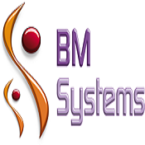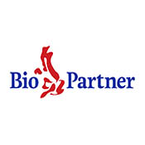Recommended Global Nursing Webinars & Conferences
Asia Pacific & Middle East
Nursing Leadership 2025
About Conference
We are delighted to extend a warm invitation to the 56th International Conference on Nursing Leadership and Management, scheduled for May 12-13,2025, in London, UK . Organized by Conference Series under its Open Access Initiative, this event aims to contribute significantly to the scientific community.
Conference Series hosts over 1000 conferences annually across the USA, Europe, and Asia, with support from over 1000 scientific societies. It also publishes 700+ open access journals with editorial boards comprising more than 100,000 esteemed scientists and researchers.
Nursing Leadership 2025 will emphasize advanced nursing research and its impact on clinical practice and outcomes. The conference will feature oral and poster presentations, educational workshops, and influential plenary sessions. Attendees will gain valuable tools to enhance nursing research education programs, improving their effectiveness in nursing practice.
This conference serves as a collaborative platform for nursing students, faculty, deans, researchers, and leaders to address pressing topics in nursing education and practice.
Sessions
Session 1: Transformational Leadership in Nursing: Empowering Change
Transformational leadership in nursing is a powerful approach that focuses on inspiring and motivating nurses to embrace change and innovation within healthcare. It emphasizes visionary thinking, encouraging nurses to see beyond daily tasks and envision a future where patient care is continually improved. Transformational leaders empower their teams by fostering a culture of collaboration, trust, and professional growth. They promote open communication, solicit ideas, and support initiatives that challenge the status quo, ultimately leading to enhanced patient outcomes and organizational effectiveness. By embodying values such as empathy, integrity, and resilience, transformational nurse leaders not only drive positive change but also cultivate a motivated and engaged workforce dedicated to delivering exceptional care.
USA
American Nurses Association (ANA) | National League for Nursing (NLN) | American Association of Critical-Care Nurses (AACN) | National Student Nurses' Association (NSNA) | American Association of Nurse Practitioners (AANP) | American Academy of Nursing (AAN) | Emergency Nurses Association (ENA) | Association of Operative Registered Nurses (AORN) | American Holistic Nurses Association (AHNA) | Oncology Nursing Society (ONS) | American Psychiatric Nurses Association (APNA) | American Association of Nurse Anesthetists (AANA) | National Association of School Nurses (NASN) | Dermatology Nurses' Association (DNA) | Society of Pediatric Nurses (SPN) | Wound Ostomy and Continence Nurses Society (WOCN) | American Association of Critical-Care Nurses (AACN)
EURO
European Federation of Nurses Associations (EFN) | International Council of Nurses - Europe (ICN Europe) | Royal College of Nursing (UK) | Nursing and Midwifery Council (UK) | Deutscher Berufsverband für Pflegeberufe (DBfK) – Germany| Conseil International des Infirmières (CII) – France| Svensk Sjuksköterskeförening (SSF) – Sweden| Norsk Sykepleierforbund (NSF) – Norway| Schweizer Berufsverband der Pflegefachfrauen und Pflegefachmänner (SBK) –Switzerland|Österreichischer Gesundheits- und Krankenpflegeverband (ÖGKV) – Austria| Associazione Infermieri (CNAI) – Italy| Verpleegkundigen & Verzorgenden Nederland (V&VN) – Netherlands
Session 2: Ethical Dilemmas in Nursing Leadership: Navigating Complex Decisions
Ethical dilemmas in nursing leadership often arise from complex situations where conflicting values, principles, or interests must be carefully navigated. Nurse leaders frequently face decisions that involve balancing patient welfare, staff well-being, organizational priorities, and ethical standards. These dilemmas may involve issues such as resource allocation, end-of-life care, patient autonomy versus beneficence, and conflicts of interest. Effective navigation of these dilemmas requires a strong ethical framework, critical thinking skills, and an ability to engage stakeholders in thoughtful dialogue. Nurse leaders must uphold ethical principles while considering legal obligations and organizational policies, ensuring decisions prioritize patient safety and ethical integrity within the healthcare environment.
USA
American Nurses Association (ANA) | National League for Nursing (NLN) | American Association of Critical-Care Nurses (AACN) | National Student Nurses' Association (NSNA) | American Association of Nurse Practitioners (AANP) | American Academy of Nursing (AAN) | Emergency Nurses Association (ENA) | Association of Operative Registered Nurses (AORN) | American Holistic Nurses Association (AHNA) | Oncology Nursing Society (ONS) | American Psychiatric Nurses Association (APNA) | American Association of Nurse Anesthetists (AANA) | National Association of School Nurses (NASN) | Dermatology Nurses' Association (DNA) | Society of Pediatric Nurses (SPN) | Wound Ostomy and Continence Nurses Society (WOCN) | American Association of Critical-Care Nurses (AACN)
EURO
European Federation of Nurses Associations (EFN) | International Council of Nurses - Europe (ICN Europe) | Royal College of Nursing (UK) | Nursing and Midwifery Council (UK) | Deutscher Berufsverband für Pflegeberufe (DBfK) – Germany| Conseil International des Infirmières (CII) – France| Svensk Sjuksköterskeförening (SSF) – Sweden| Norsk Sykepleierforbund (NSF) – Norway| Schweizer Berufsverband der Pflegefachfrauen und Pflegefachmänner (SBK) –Switzerland|Österreichischer Gesundheits- und Krankenpflegeverband (ÖGKV) – Austria| Associazione Infermieri (CNAI) – Italy| Verpleegkundigen & Verzorgenden Nederland (V&VN) – Netherlands
Session 4: Strategic Planning and Execution in Healthcare: Aligning Goals with Leadership Vision
Strategic planning and execution in healthcare involve aligning organizational goals with the overarching vision set by leadership. It encompasses a systematic process of defining objectives, assessing resources, and implementing initiatives to achieve long-term success. Effective strategic planning requires a deep understanding of healthcare trends, patient needs, and regulatory requirements. Nurse leaders play a crucial role in this process by articulating a clear vision, fostering collaboration across departments, and ensuring alignment between strategic goals and daily operations. By employing data-driven decision-making and continuous evaluation, nurse leaders can adapt strategies to evolving challenges and opportunities, ultimately enhancing healthcare delivery and patient outcomes.
USA
American Nurses Association (ANA) | National League for Nursing (NLN) | American Association of Critical-Care Nurses (AACN) | National Student Nurses' Association (NSNA) | American Association of Nurse Practitioners (AANP) | American Academy of Nursing (AAN) | Emergency Nurses Association (ENA) | Association of Operative Registered Nurses (AORN) | American Holistic Nurses Association (AHNA) | Oncology Nursing Society (ONS) | American Psychiatric Nurses Association (APNA) | American Association of Nurse Anesthetists (AANA) | National Association of School Nurses (NASN) | Dermatology Nurses' Association (DNA) | Society of Pediatric Nurses (SPN) | Wound Ostomy and Continence Nurses Society (WOCN) | American Association of Critical-Care Nurses (AACN)
EURO
European Federation of Nurses Associations (EFN) | International Council of Nurses - Europe (ICN Europe) | Royal College of Nursing (UK) | Nursing and Midwifery Council (UK) | Deutscher Berufsverband für Pflegeberufe (DBfK) – Germany| Conseil International des Infirmières (CII) – France| Svensk Sjuksköterskeförening (SSF) – Sweden| Norsk Sykepleierforbund (NSF) – Norway| Schweizer Berufsverband der Pflegefachfrauen und Pflegefachmänner (SBK) –Switzerland|Österreichischer Gesundheits- und Krankenpflegeverband (ÖGKV) – Austria| Associazione Infermieri (CNAI) – Italy| Verpleegkundigen & Verzorgenden Nederland (V&VN) – Netherlands
Session 5: Crisis Management in Nursing: Leading Through Emergencies
Crisis management in nursing involves the strategic leadership and coordination required to navigate emergencies effectively within healthcare settings. Nurse leaders must be prepared to respond swiftly and decisively to various crises, such as natural disasters, infectious disease outbreaks, or patient care incidents. This includes implementing emergency protocols, allocating resources efficiently, and ensuring the safety of patients and staff. Effective crisis management also involves clear communication, both internally among healthcare teams and externally with stakeholders and authorities. Nurse leaders play a pivotal role in maintaining calm, providing guidance, and fostering resilience among their teams to mitigate the impact of crises and maintain continuity of care.
USA
American Nurses Association (ANA) | National League for Nursing (NLN) | American Association of Critical-Care Nurses (AACN) | National Student Nurses' Association (NSNA) | American Association of Nurse Practitioners (AANP) | American Academy of Nursing (AAN) | Emergency Nurses Association (ENA) | Association of Operative Registered Nurses (AORN) | American Holistic Nurses Association (AHNA) | Oncology Nursing Society (ONS) | American Psychiatric Nurses Association (APNA) | American Association of Nurse Anesthetists (AANA) | National Association of School Nurses (NASN) | Dermatology Nurses' Association (DNA) | Society of Pediatric Nurses (SPN) | Wound Ostomy and Continence Nurses Society (WOCN) | American Association of Critical-Care Nurses (AACN)
EURO
European Federation of Nurses Associations (EFN) | International Council of Nurses - Europe (ICN Europe) |Royal College of Nursing (UK) | Nursing and Midwifery Council (UK) | Deutscher Berufsverband für Pflegeberufe (DBfK) – Germany| Conseil International des Infirmières (CII) – France| Svensk Sjuksköterskeförening (SSF) – Sweden| Norsk Sykepleierforbund (NSF) – Norway| Schweizer Berufsverband der Pflegefachfrauen und Pflegefachmänner (SBK) –Switzerland|Österreichischer Gesundheits- und Krankenpflegeverband (ÖGKV) – Austria| Associazione Infermieri (CNAI) – Italy| Verpleegkundigen & Verzorgenden Nederland (V&VN) – Netherlands
Session 6: Building and Sustaining High-Performance Teams in Nursing
Building and sustaining high-performance teams in nursing involves creating a supportive environment where collaboration, communication, and mutual respect thrive. Nurse leaders play a pivotal role in fostering team cohesion by promoting shared goals, leveraging individual strengths, and encouraging continuous professional development. Effective team building includes establishing clear roles and responsibilities, fostering open dialogue, and cultivating a culture of trust and accountability. Nurse leaders also empower teams by providing resources and recognition, facilitating a positive work environment that enhances job satisfaction and ultimately improves patient outcomes. By investing in team dynamics and nurturing a culture of excellence, nurse leaders can sustain high-performance teams that adapt to challenges and deliver quality care consistently.
USA
American Nurses Association (ANA) | National League for Nursing (NLN) | American Association of Critical-Care Nurses (AACN) | National Student Nurses' Association (NSNA) | American Association of Nurse Practitioners (AANP) | American Academy of Nursing (AAN) | Emergency Nurses Association (ENA) | Association of Operative Registered Nurses (AORN) | American Holistic Nurses Association (AHNA) | Oncology Nursing Society (ONS) | American Psychiatric Nurses Association (APNA) | American Association of Nurse Anesthetists (AANA) | National Association of School Nurses (NASN) | Dermatology Nurses' Association (DNA) | Society of Pediatric Nurses (SPN) | Wound Ostomy and Continence Nurses Society (WOCN) | American Association of Critical-Care Nurses (AACN)
EURO
European Federation of Nurses Associations (EFN) | International Council of Nurses - Europe (ICN Europe) | Royal College of Nursing (UK) | Nursing and Midwifery Council (UK) | Deutscher Berufsverband für Pflegeberufe (DBfK) – Germany| Conseil International des Infirmières (CII) – France| Svensk Sjuksköterskeförening (SSF) – Sweden| Norsk Sykepleierforbund (NSF) – Norway| Schweizer Berufsverband der Pflegefachfrauen und Pflegefachmänner (SBK) –Switzerland|Österreichischer Gesundheits- und Krankenpflegeverband (ÖGKV) – Austria| Associazione Infermieri (CNAI) – Italy| Verpleegkundigen & Verzorgenden Nederland (V&VN) – Netherlands
Session 6: Healthcare Policy and Advocacy: Influencing Change as a Nurse Leader
Healthcare policy and advocacy are critical roles for nurse leaders in influencing systemic change and improving patient care. Nurse leaders advocate for policies that promote patient safety, access to quality care, and professional autonomy for nurses. They engage in legislative processes, collaborate with stakeholders, and leverage evidence-based practices to shape healthcare policy. Effective advocacy involves raising awareness about healthcare issues, mobilizing support among colleagues and the community, and participating in professional organizations to amplify nursing voices. Nurse leaders strive to bridge gaps between policy-makers and frontline healthcare providers, ensuring that policies reflect the needs and perspectives of patients and healthcare professionals alike, thereby fostering positive change in healthcare systems.
USA
American Nurses Association (ANA) | National League for Nursing (NLN) | American Association of Critical-Care Nurses (AACN) | National Student Nurses' Association (NSNA) | American Association of Nurse Practitioners (AANP) | American Academy of Nursing (AAN) | Emergency Nurses Association (ENA) | Association of Operative Registered Nurses (AORN) | American Holistic Nurses Association (AHNA) | Oncology Nursing Society (ONS) | American Psychiatric Nurses Association (APNA) | American Association of Nurse Anesthetists (AANA) | National Association of School Nurses (NASN) | Dermatology Nurses' Association (DNA) | Society of Pediatric Nurses (SPN) | Wound Ostomy and Continence Nurses Society (WOCN) | American Association of Critical-Care Nurses (AACN)
EURO
European Federation of Nurses Associations (EFN) | International Council of Nurses - Europe (ICN Europe) | Royal College of Nursing (UK) | Nursing and Midwifery Council (UK) | Deutscher Berufsverband für Pflegeberufe (DBfK) – Germany| Conseil International des Infirmières (CII) – France| Svensk Sjuksköterskeförening (SSF) – Sweden| Norsk Sykepleierforbund (NSF) – Norway| Schweizer Berufsverband der Pflegefachfrauen und Pflegefachmänner (SBK) –Switzerland|Österreichischer Gesundheits- und Krankenpflegeverband (ÖGKV) – Austria| Associazione Infermieri (CNAI) – Italy| Verpleegkundigen & Verzorgenden Nederland (V&VN) – Netherlands
Session 7: Leadership in Patient Safety and Quality Improvement
Leadership in patient safety and quality improvement is essential for nurse leaders to ensure optimal healthcare outcomes. It involves creating a culture of safety where continuous improvement is prioritized through evidence-based practices and teamwork. Nurse leaders lead initiatives to identify and mitigate risks, implement best practices, and monitor outcomes to enhance patient safety. They champion quality improvement efforts by promoting data-driven decision-making, fostering interdisciplinary collaboration, and empowering frontline staff to participate in improvement initiatives. By advocating for patient-centered care and embedding safety protocols into daily practices, nurse leaders play a crucial role in achieving higher standards of care delivery and improving overall patient outcomes.
USA
American Nurses Association (ANA) | National League for Nursing (NLN) | American Association of Critical-Care Nurses (AACN) | National Student Nurses' Association (NSNA) | American Association of Nurse Practitioners (AANP) | American Academy of Nursing (AAN) | Emergency Nurses Association (ENA) | Association of Operative Registered Nurses (AORN) | American Holistic Nurses Association (AHNA) | Oncology Nursing Society (ONS) | American Psychiatric Nurses Association (APNA) | American Association of Nurse Anesthetists (AANA) | National Association of School Nurses (NASN) | Dermatology Nurses' Association (DNA) | Society of Pediatric Nurses (SPN) | Wound Ostomy and Continence Nurses Society (WOCN) | American Association of Critical-Care Nurses (AACN)
EURO
European Federation of Nurses Associations (EFN) | International Council of Nurses - Europe (ICN Europe) | Royal College of Nursing (UK) | Nursing and Midwifery Council (UK) | Deutscher Berufsverband für Pflegeberufe (DBfK) – Germany| Conseil International des Infirmières (CII) – France| Svensk Sjuksköterskeförening (SSF) – Sweden| Norsk Sykepleierforbund (NSF) – Norway| Schweizer Berufsverband der Pflegefachfrauen und Pflegefachmänner (SBK) –Switzerland|Österreichischer Gesundheits- und Krankenpflegeverband (ÖGKV) – Austria| Associazione Infermieri (CNAI) – Italy| Verpleegkundigen & Verzorgenden Nederland (V&VN) – Netherlands
Session 8:Financial Management for Nurse Leaders: Budgeting and Resource Allocation
Financial management for nurse leaders encompasses the strategic oversight of budgeting and resource allocation within healthcare organizations. Nurse leaders must effectively allocate resources to optimize patient care while adhering to financial constraints and regulatory requirements. This includes analyzing financial data, forecasting expenditures, and prioritizing investments that align with organizational goals and patient needs. Nurse leaders collaborate with finance teams and department heads to develop budgets that support quality care delivery and operational efficiency. They also advocate for adequate funding for nursing services, equipment, and staff development to maintain high standards of care. By leveraging financial acumen and aligning resources with clinical priorities, nurse leaders contribute to sustainable healthcare practices and enhanced patient outcomes.
USA
American Nurses Association (ANA) | National League for Nursing (NLN) | American Association of Critical-Care Nurses (AACN) | National Student Nurses' Association (NSNA) | American Association of Nurse Practitioners (AANP) | American Academy of Nursing (AAN) | Emergency Nurses Association (ENA) | Association of Operative Registered Nurses (AORN) | American Holistic Nurses Association (AHNA) | Oncology Nursing Society (ONS) | American Psychiatric Nurses Association (APNA) | American Association of Nurse Anesthetists (AANA) | National Association of School Nurses (NASN) | Dermatology Nurses' Association (DNA) | Society of Pediatric Nurses (SPN) | Wound Ostomy and Continence Nurses Society (WOCN) | American Association of Critical-Care Nurses (AACN)
EURO
European Federation of Nurses Associations (EFN) | International Council of Nurses - Europe (ICN Europe) | Royal College of Nursing (UK) | Nursing and Midwifery Council (UK) | Deutscher Berufsverband für Pflegeberufe (DBfK) – Germany| Conseil International des Infirmières (CII) – France| Svensk Sjuksköterskeförening (SSF) – Sweden| Norsk Sykepleierforbund (NSF) – Norway| Schweizer Berufsverband der Pflegefachfrauen und Pflegefachmänner (SBK) –Switzerland|Österreichischer Gesundheits- und Krankenpflegeverband (ÖGKV) – Austria| Associazione Infermieri (CNAI) – Italy| Verpleegkundigen & Verzorgenden Nederland (V&VN) – Netherlands
Session 9: Innovations in Nursing Practice: Leading the Way to Improved Outcomes
Innovations in nursing practice are pivotal for advancing patient care and achieving improved outcomes. Nurse leaders drive these innovations by fostering a culture of creativity and continuous improvement among their teams. This includes implementing new technologies, evidence-based practices, and patient-centered approaches that enhance efficiency and quality of care. Nurse leaders encourage interdisciplinary collaboration to identify and address healthcare challenges through innovative solutions. By staying abreast of emerging trends and research, they inspire their teams to adopt best practices and adapt to evolving patient needs. Ultimately, nurse leaders play a crucial role in pioneering transformative changes that elevate nursing practice and contribute to positive health outcomes for patients.
USA
American Nurses Association (ANA) | National League for Nursing (NLN) | American Association of Critical-Care Nurses (AACN) | National Student Nurses' Association (NSNA) | American Association of Nurse Practitioners (AANP) | American Academy of Nursing (AAN) | Emergency Nurses Association (ENA) | Association of Operative Registered Nurses (AORN) | American Holistic Nurses Association (AHNA) | Oncology Nursing Society (ONS) | American Psychiatric Nurses Association (APNA) | American Association of Nurse Anesthetists (AANA) | National Association of School Nurses (NASN) | Dermatology Nurses' Association (DNA) | Society of Pediatric Nurses (SPN) | Wound Ostomy and Continence Nurses Society (WOCN) | American Association of Critical-Care Nurses (AACN)
EURO
European Federation of Nurses Associations (EFN) | International Council of Nurses - Europe (ICN Europe) | Royal College of Nursing (UK) | Nursing and Midwifery Council (UK) | Deutscher Berufsverband für Pflegeberufe (DBfK) – Germany| Conseil International des Infirmières (CII) – France| Svensk Sjuksköterskeförening (SSF) – Sweden| Norsk Sykepleierforbund (NSF) – Norway| Schweizer Berufsverband der Pflegefachfrauen und Pflegefachmänner (SBK) –Switzerland|Österreichischer Gesundheits- und Krankenpflegeverband (ÖGKV) – Austria| Associazione Infermieri (CNAI) – Italy| Verpleegkundigen & Verzorgenden Nederland (V&VN) – Netherlands
Session 10: Diversity and Inclusion in Healthcare Leadership
Diversity and inclusion in healthcare leadership are essential for fostering an environment where all voices are heard and valued. Nurse leaders promote diversity by advocating for representation from various backgrounds, cultures, and perspectives within leadership roles. They strive to create inclusive workplaces where differences are celebrated and contribute to innovative solutions to healthcare challenges. By embracing diversity, nurse leaders cultivate a culture of respect and equity that enhances patient care outcomes and promotes workforce satisfaction. They also implement policies and practices that support diverse staff development, mentorship, and career advancement opportunities, ensuring healthcare leadership reflects the communities they serve.
USA
American Nurses Association (ANA) | National League for Nursing (NLN) | American Association of Critical-Care Nurses (AACN) | National Student Nurses' Association (NSNA) | American Association of Nurse Practitioners (AANP) | American Academy of Nursing (AAN) | Emergency Nurses Association (ENA) | Association of Operative Registered Nurses (AORN) | American Holistic Nurses Association (AHNA) | Oncology Nursing Society (ONS) | American Psychiatric Nurses Association (APNA) | American Association of Nurse Anesthetists (AANA) | National Association of School Nurses (NASN) | Dermatology Nurses' Association (DNA) | Society of Pediatric Nurses (SPN) | Wound Ostomy and Continence Nurses Society (WOCN) | American Association of Critical-Care Nurses (AACN)
EURO
European Federation of Nurses Associations (EFN) | International Council of Nurses - Europe (ICN Europe) | Royal College of Nursing (UK) | Nursing and Midwifery Council (UK) | Deutscher Berufsverband für Pflegeberufe (DBfK) – Germany| Conseil International des Infirmières (CII) – France| Svensk Sjuksköterskeförening (SSF) – Sweden| Norsk Sykepleierforbund (NSF) – Norway| Schweizer Berufsverband der Pflegefachfrauen und Pflegefachmänner (SBK) –Switzerland|Österreichischer Gesundheits- und Krankenpflegeverband (ÖGKV) – Austria| Associazione Infermieri (CNAI) – Italy| Verpleegkundigen & Verzorgenden Nederland (V&VN) – Netherlands
Session 11: The Role of Emotional Intelligence in Nursing Leadership
Emotional intelligence (EI) plays a critical role in nursing leadership by enhancing interpersonal relationships, communication, and decision-making. Nurse leaders with high EI understand and manage their own emotions effectively, which enables them to remain calm and resilient in high-pressure situations. They also demonstrate empathy and compassion towards patients and team members, fostering trust and collaboration within the healthcare environment. EI enables nurse leaders to navigate conflicts with sensitivity, promote a positive work culture, and inspire others through authentic leadership. By recognizing and responding to the emotions of themselves and others, nurse leaders with strong EI can create supportive environments that enhance both patient care outcomes and staff satisfaction.
USA
American Nurses Association (ANA) | National League for Nursing (NLN) | American Association of Critical-Care Nurses (AACN) | National Student Nurses' Association (NSNA) | American Association of Nurse Practitioners (AANP) | American Academy of Nursing (AAN) | Emergency Nurses Association (ENA) | Association of Operative Registered Nurses (AORN) | American Holistic Nurses Association (AHNA) | Oncology Nursing Society (ONS) | American Psychiatric Nurses Association (APNA) | American Association of Nurse Anesthetists (AANA) | National Association of School Nurses (NASN) | Dermatology Nurses' Association (DNA) | Society of Pediatric Nurses (SPN) | Wound Ostomy and Continence Nurses Society (WOCN) | American Association of Critical-Care Nurses (AACN)
EURO
European Federation of Nurses Associations (EFN) | International Council of Nurses - Europe (ICN Europe) | Royal College of Nursing (UK) | Nursing and Midwifery Council (UK) | Deutscher Berufsverband für Pflegeberufe (DBfK) – Germany| Conseil International des Infirmières (CII) – France| Svensk Sjuksköterskeförening (SSF) – Sweden| Norsk Sykepleierforbund (NSF) – Norway| Schweizer Berufsverband der Pflegefachfrauen und Pflegefachmänner (SBK) –Switzerland|Österreichischer Gesundheits- und Krankenpflegeverband (ÖGKV) – Austria| Associazione Infermieri (CNAI) – Italy| Verpleegkundigen & Verzorgenden Nederland (V&VN) – Netherlands
Session 12: Effective Communication Strategies for Nurse Leaders
Effective communication is foundational for nurse leaders to foster collaboration, promote patient safety, and optimize healthcare outcomes. Nurse leaders employ clear and concise communication techniques to articulate goals, delegate responsibilities, and provide feedback to their teams. They actively listen to concerns and ideas from staff, patients, and other healthcare professionals, ensuring everyone feels valued and understood. Nurse leaders also utilize empathy and cultural sensitivity in their communication to build trust and rapport with diverse stakeholders. By employing these strategies, nurse leaders create a supportive and transparent communication environment that enhances teamwork, minimizes errors, and ultimately improves the quality of patient care.
USA
American Nurses Association (ANA) | National League for Nursing (NLN) | American Association of Critical-Care Nurses (AACN) | National Student Nurses' Association (NSNA) | American Association of Nurse Practitioners (AANP) | American Academy of Nursing (AAN) | Emergency Nurses Association (ENA) | Association of Operative Registered Nurses (AORN) | American Holistic Nurses Association (AHNA) | Oncology Nursing Society (ONS) | American Psychiatric Nurses Association (APNA) | American Association of Nurse Anesthetists (AANA) | National Association of School Nurses (NASN) | Dermatology Nurses' Association (DNA) | Society of Pediatric Nurses (SPN) | Wound Ostomy and Continence Nurses Society (WOCN) | American Association of Critical-Care Nurses (AACN)
EURO
European Federation of Nurses Associations (EFN) | International Council of Nurses - Europe (ICN Europe) | Royal College of Nursing (UK) | Nursing and Midwifery Council (UK) | Deutscher Berufsverband für Pflegeberufe (DBfK) – Germany| Conseil International des Infirmières (CII) – France| Svensk Sjuksköterskeförening (SSF) – Sweden| Norsk Sykepleierforbund (NSF) – Norway| Schweizer Berufsverband der Pflegefachfrauen und Pflegefachmänner (SBK) –Switzerland|Österreichischer Gesundheits- und Krankenpflegeverband (ÖGKV) – Austria| Associazione Infermieri (CNAI) – Italy| Verpleegkundigen & Verzorgenden Nederland (V&VN) – Netherlands
Session 13 : Professional Development and Mentorship in Nursing Leadership
Professional development and mentorship are crucial aspects of nursing leadership that contribute to the growth and success of healthcare teams. Nurse leaders play a pivotal role in guiding the career paths of their staff through mentorship, coaching, and providing opportunities for learning and skill development. They facilitate ongoing education, certifications, and workshops to keep their teams abreast of advancements in healthcare practices and technologies. By fostering a culture of continuous learning and mentorship, nurse leaders empower their staff to reach their full potential and stay motivated in their roles. This investment in professional development not only enhances individual competencies but also strengthens team cohesion and improves overall patient care outcomes.
USA
American Nurses Association (ANA) | National League for Nursing (NLN) | American Association of Critical-Care Nurses (AACN) | National Student Nurses' Association (NSNA) | American Association of Nurse Practitioners (AANP) | American Academy of Nursing (AAN) | Emergency Nurses Association (ENA) | Association of Operative Registered Nurses (AORN) | American Holistic Nurses Association (AHNA) | Oncology Nursing Society (ONS) | American Psychiatric Nurses Association (APNA) | American Association of Nurse Anesthetists (AANA) | National Association of School Nurses (NASN) | Dermatology Nurses' Association (DNA) | Society of Pediatric Nurses (SPN) | Wound Ostomy and Continence Nurses Society (WOCN) | American Association of Critical-Care Nurses (AACN)
EURO
European Federation of Nurses Associations (EFN) | International Council of Nurses - Europe (ICN Europe) | Royal College of Nursing (UK) | Nursing and Midwifery Council (UK) | Deutscher Berufsverband für Pflegeberufe (DBfK) – Germany| Conseil International des Infirmières (CII) – France| Svensk Sjuksköterskeförening (SSF) – Sweden| Norsk Sykepleierforbund (NSF) – Norway| Schweizer Berufsverband der Pflegefachfrauen und Pflegefachmänner (SBK) –Switzerland|Österreichischer Gesundheits- und Krankenpflegeverband (ÖGKV) – Austria| Associazione Infermieri (CNAI) – Italy| Verpleegkundigen & Verzorgenden Nederland (V&VN) – Netherlands
Session 14: Leading Through Change: Adapting to Healthcare Reform
Leading through change in the context of healthcare reform requires nurse leaders to navigate complexities and uncertainties while maintaining focus on patient care and organizational goals. Nurse leaders must effectively communicate the implications of healthcare reform to their teams, fostering understanding and readiness for change. They collaborate with stakeholders to adapt policies, workflows, and practices to comply with new regulations and improve healthcare delivery. Successful leadership in times of reform involves proactive planning, flexibility, and resilience in the face of evolving healthcare landscapes. By championing innovation and patient-centered approaches, nurse leaders can guide their teams through transitions, ensuring continuity of care and positive outcomes amidst healthcare reform.
USA
American Nurses Association (ANA) | National League for Nursing (NLN) | American Association of Critical-Care Nurses (AACN) | National Student Nurses' Association (NSNA) | American Association of Nurse Practitioners (AANP) | American Academy of Nursing (AAN) | Emergency Nurses Association (ENA) | Association of Operative Registered Nurses (AORN) | American Holistic Nurses Association (AHNA) | Oncology Nursing Society (ONS) | American Psychiatric Nurses Association (APNA) | American Association of Nurse Anesthetists (AANA) | National Association of School Nurses (NASN) | Dermatology Nurses' Association (DNA) | Society of Pediatric Nurses (SPN) | Wound Ostomy and Continence Nurses Society (WOCN) | American Association of Critical-Care Nurses (AACN)
EURO
European Federation of Nurses Associations (EFN) | International Council of Nurses - Europe (ICN Europe) | Royal College of Nursing (UK) | Nursing and Midwifery Council (UK) | Deutscher Berufsverband für Pflegeberufe (DBfK) – Germany| Conseil International des Infirmières (CII) – France| Svensk Sjuksköterskeförening (SSF) – Sweden| Norsk Sykepleierforbund (NSF) – Norway| Schweizer Berufsverband der Pflegefachfrauen und Pflegefachmänner (SBK) –Switzerland|Österreichischer Gesundheits- und Krankenpflegeverband (ÖGKV) – Austria| Associazione Infermieri (CNAI) – Italy| Verpleegkundigen & Verzorgenden Nederland (V&VN) – Netherlands
Session 15: Technology Integration in Nursing: Leveraging IT for Enhanced Care
Technology integration in nursing involves leveraging information technology (IT) to enhance patient care delivery and outcomes. Nurse leaders play a critical role in advocating for and implementing technological advancements such as electronic health records (EHRs), telehealth platforms, and clinical decision support systems. They ensure that these technologies are seamlessly integrated into nursing workflows to improve efficiency, accuracy, and communication among healthcare teams. Nurse leaders also facilitate training and support for staff to maximize the benefits of IT solutions, promoting a culture of innovation and continuous improvement. By harnessing technology effectively, nurse leaders can optimize resource utilization, streamline processes, and ultimately enhance the quality of care provided to patients.
USA
American Nurses Association (ANA) | National League for Nursing (NLN) | American Association of Critical-Care Nurses (AACN) | National Student Nurses' Association (NSNA) | American Association of Nurse Practitioners (AANP) | American Academy of Nursing (AAN) | Emergency Nurses Association (ENA) | Association of Operative Registered Nurses (AORN) | American Holistic Nurses Association (AHNA) | Oncology Nursing Society (ONS) | American Psychiatric Nurses Association (APNA) | American Association of Nurse Anesthetists (AANA) | National Association of School Nurses (NASN) | Dermatology Nurses' Association (DNA) | Society of Pediatric Nurses (SPN) | Wound Ostomy and Continence Nurses Society (WOCN) | American Association of Critical-Care Nurses (AACN)
EURO
European Federation of Nurses Associations (EFN) | International Council of Nurses - Europe (ICN Europe) | Royal College of Nursing (UK) | Nursing and Midwifery Council (UK) | Deutscher Berufsverband für Pflegeberufe (DBfK) – Germany| Conseil International des Infirmières (CII) – France| Svensk Sjuksköterskeförening (SSF) – Sweden| Norsk Sykepleierforbund (NSF) – Norway| Schweizer Berufsverband der Pflegefachfrauen und Pflegefachmänner (SBK) –Switzerland|Österreichischer Gesundheits- und Krankenpflegeverband (ÖGKV) – Austria| Associazione Infermieri (CNAI) – Italy| Verpleegkundigen & Verzorgenden Nederland (V&VN) – Netherlands
Session 16: Conflict Resolution and Negotiation Skills for Nurse Leaders
Conflict resolution and negotiation skills are essential for nurse leaders to navigate interpersonal conflicts and achieve consensus in healthcare settings. Nurse leaders employ active listening and empathy to understand differing perspectives and resolve disputes effectively. They facilitate open communication and constructive dialogue among team members to address conflicts promptly and maintain a positive work environment. Negotiation skills enable nurse leaders to advocate for resources, influence decisions, and collaborate with stakeholders to achieve mutually beneficial outcomes. By fostering a culture of respect and transparency, nurse leaders can mitigate conflicts, promote teamwork, and ensure continuity of care, ultimately enhancing patient satisfaction and staff engagement.
USA
American Nurses Association (ANA) | National League for Nursing (NLN) | American Association of Critical-Care Nurses (AACN) | National Student Nurses' Association (NSNA) | American Association of Nurse Practitioners (AANP) | American Academy of Nursing (AAN) | Emergency Nurses Association (ENA) | Association of Operative Registered Nurses (AORN) | American Holistic Nurses Association (AHNA) | Oncology Nursing Society (ONS) | American Psychiatric Nurses Association (APNA) | American Association of Nurse Anesthetists (AANA) | National Association of School Nurses (NASN) | Dermatology Nurses' Association (DNA) | Society of Pediatric Nurses (SPN) | Wound Ostomy and Continence Nurses Society (WOCN) | American Association of Critical-Care Nurses (AACN)
EURO
European Federation of Nurses Associations (EFN) | International Council of Nurses - Europe (ICN Europe) | Royal College of Nursing (UK) | Nursing and Midwifery Council (UK) | Deutscher Berufsverband für Pflegeberufe (DBfK) – Germany| Conseil International des Infirmières (CII) – France| Svensk Sjuksköterskeförening (SSF) – Sweden| Norsk Sykepleierforbund (NSF) – Norway| Schweizer Berufsverband der Pflegefachfrauen und Pflegefachmänner (SBK) –Switzerland|Österreichischer Gesundheits- und Krankenpflegeverband (ÖGKV) – Austria| Associazione Infermieri (CNAI) – Italy| Verpleegkundigen & Verzorgenden Nederland (V&VN) – Netherlands
Session 17: Building Resilience in Nursing Leadership
Building resilience in nursing leadership is crucial for navigating the challenges and stresses inherent in healthcare environments. Nurse leaders cultivate resilience by fostering a supportive workplace culture that encourages self-care, teamwork, and reflection. They promote strategies such as mindfulness, stress management techniques, and professional development to enhance personal resilience and that of their teams. Effective communication and empathy play a vital role in understanding and addressing the emotional toll of nursing leadership. By modeling resilience and providing resources for coping with adversity, nurse leaders empower their teams to adapt to change, manage stress effectively, and sustain high-quality care delivery despite challenges.
USA
American Nurses Association (ANA) | National League for Nursing (NLN) | American Association of Critical-Care Nurses (AACN) | National Student Nurses' Association (NSNA) | American Association of Nurse Practitioners (AANP) | American Academy of Nursing (AAN) | Emergency Nurses Association (ENA) | Association of Operative Registered Nurses (AORN) | American Holistic Nurses Association (AHNA) | Oncology Nursing Society (ONS) | American Psychiatric Nurses Association (APNA) | American Association of Nurse Anesthetists (AANA) | National Association of School Nurses (NASN) | Dermatology Nurses' Association (DNA) | Society of Pediatric Nurses (SPN) | Wound Ostomy and Continence Nurses Society (WOCN) | American Association of Critical-Care Nurses (AACN)
EURO
European Federation of Nurses Associations (EFN) | International Council of Nurses - Europe (ICN Europe) | Royal College of Nursing (UK) | Nursing and Midwifery Council (UK) | Deutscher Berufsverband für Pflegeberufe (DBfK) – Germany| Conseil International des Infirmières (CII) – France| Svensk Sjuksköterskeförening (SSF) – Sweden| Norsk Sykepleierforbund (NSF) – Norway| Schweizer Berufsverband der Pflegefachfrauen und Pflegefachmänner (SBK) –Switzerland|Österreichischer Gesundheits- und Krankenpflegeverband (ÖGKV) – Austria| Associazione Infermieri (CNAI) – Italy| Verpleegkundigen & Verzorgenden Nederland (V&VN) – Netherlands
Session 18: Global Health Challenges: Nursing Leadership on a Global Scale
Global health challenges necessitate nursing leadership that spans borders, cultures, and healthcare systems. Nurse leaders on a global scale advocate for health equity, access to care, and the implementation of evidence-based practices worldwide. They collaborate with international organizations, governments, and local communities to address issues such as infectious diseases, maternal health, and healthcare disparities. Nurse leaders promote cross-cultural understanding, adaptability, and resilience in navigating diverse healthcare landscapes. By sharing best practices, conducting research, and advocating for policy changes, they play a crucial role in shaping global health agendas and improving health outcomes on a global scale.
USA
American Nurses Association (ANA) | National League for Nursing (NLN) | American Association of Critical-Care Nurses (AACN) | National Student Nurses' Association (NSNA) | American Association of Nurse Practitioners (AANP) | American Academy of Nursing (AAN) | Emergency Nurses Association (ENA) | Association of Operative Registered Nurses (AORN) | American Holistic Nurses Association (AHNA) | Oncology Nursing Society (ONS) | American Psychiatric Nurses Association (APNA) | American Association of Nurse Anesthetists (AANA) | National Association of School Nurses (NASN) | Dermatology Nurses' Association (DNA) | Society of Pediatric Nurses (SPN) | Wound Ostomy and Continence Nurses Society (WOCN) | American Association of Critical-Care Nurses (AACN)
EURO
European Federation of Nurses Associations (EFN) | International Council of Nurses - Europe (ICN Europe) | Royal College of Nursing (UK) | Nursing and Midwifery Council (UK) | Deutscher Berufsverband für Pflegeberufe (DBfK) – Germany| Conseil International des Infirmières (CII) – France| Svensk Sjuksköterskeförening (SSF) – Sweden| Norsk Sykepleierforbund (NSF) – Norway| Schweizer Berufsverband der Pflegefachfrauen und Pflegefachmänner (SBK) –Switzerland|Österreichischer Gesundheits- und Krankenpflegeverband (ÖGKV) – Austria| Associazione Infermieri (CNAI) – Italy| Verpleegkundigen & Verzorgenden Nederland (V&VN) – Netherlands
Session 19 : Data-Driven Decision Making in Nursing Leadership
Data-driven decision making in nursing leadership involves using empirical evidence and analytics to inform and improve healthcare outcomes. Nurse leaders collect and analyze data from various sources, including patient records, quality indicators, and clinical outcomes, to identify trends, assess performance, and guide strategic initiatives. They leverage this information to make informed decisions that optimize resource allocation, enhance patient safety, and improve overall quality of care. Data-driven approaches also support evidence-based practice, allowing nurse leaders to implement interventions that are proven effective and tailored to meet patient needs. By prioritizing data integrity and continuous analysis, nurse leaders foster a culture of accountability and innovation in healthcare delivery.
USA
American Nurses Association (ANA) | National League for Nursing (NLN) | American Association of Critical-Care Nurses (AACN) | National Student Nurses' Association (NSNA) | American Association of Nurse Practitioners (AANP) | American Academy of Nursing (AAN) | Emergency Nurses Association (ENA) | Association of Operative Registered Nurses (AORN) | American Holistic Nurses Association (AHNA) | Oncology Nursing Society (ONS) | American Psychiatric Nurses Association (APNA) | American Association of Nurse Anesthetists (AANA) | National Association of School Nurses (NASN) | Dermatology Nurses' Association (DNA) | Society of Pediatric Nurses (SPN) | Wound Ostomy and Continence Nurses Society (WOCN) | American Association of Critical-Care Nurses (AACN)
EURO
European Federation of Nurses Associations (EFN) | International Council of Nurses - Europe (ICN Europe) | Royal College of Nursing (UK) | Nursing and Midwifery Council (UK) | Deutscher Berufsverband für Pflegeberufe (DBfK) – Germany| Conseil International des Infirmières (CII) – France| Svensk Sjuksköterskeförening (SSF) – Sweden| Norsk Sykepleierforbund (NSF) – Norway| Schweizer Berufsverband der Pflegefachfrauen und Pflegefachmänner (SBK) –Switzerland|Österreichischer Gesundheits- und Krankenpflegeverband (ÖGKV) – Austria| Associazione Infermieri (CNAI) – Italy| Verpleegkundigen & Verzorgenden Nederland (V&VN) – Netherlands
Session 20: Continuing Education and Lifelong Learning in Nursing Leadership
Continuing education and lifelong learning are essential for nursing leadership to stay current with evolving healthcare practices and advancements. Nurse leaders prioritize ongoing professional development through courses, certifications, and conferences that expand their knowledge base and skills. They advocate for continuous learning among their teams, encouraging nurses to pursue education that enhances clinical expertise, leadership capabilities, and patient care outcomes. Lifelong learning fosters innovation and adaptation to new technologies and evidence-based practices, ensuring nurse leaders remain at the forefront of healthcare delivery. By investing in education and promoting a culture of learning, nurse leaders empower their teams to deliver high-quality care and navigate challenges effectively in dynamic healthcare environments.
USA
American Nurses Association (ANA) | National League for Nursing (NLN) | American Association of Critical-Care Nurses (AACN) | National Student Nurses' Association (NSNA) | American Association of Nurse Practitioners (AANP) | American Academy of Nursing (AAN) | Emergency Nurses Association (ENA) | Association of Operative Registered Nurses (AORN) | American Holistic Nurses Association (AHNA) | Oncology Nursing Society (ONS) | American Psychiatric Nurses Association (APNA) | American Association of Nurse Anesthetists (AANA) | National Association of School Nurses (NASN) | Dermatology Nurses' Association (DNA) | Society of Pediatric Nurses (SPN) | Wound Ostomy and Continence Nurses Society (WOCN) | American Association of Critical-Care Nurses (AACN)
EURO
European Federation of Nurses Associations (EFN) | International Council of Nurses - Europe (ICN Europe) | Royal College of Nursing (UK) | Nursing and Midwifery Council (UK) | Deutscher Berufsverband für Pflegeberufe (DBfK) – Germany| Conseil International des Infirmières (CII) – France| Svensk Sjuksköterskeförening (SSF) – Sweden| Norsk Sykepleierforbund (NSF) – Norway| Schweizer Berufsverband der Pflegefachfrauen und Pflegefachmänner (SBK) –Switzerland|Österreichischer Gesundheits- und Krankenpflegeverband (ÖGKV) – Austria| Associazione Infermieri (CNAI) – Italy| Verpleegkundigen & Verzorgenden Nederland (V&VN) – Netherlands
Market Analysis
The market for nursing leadership conferences is experiencing significant growth driven by increasing demand across global healthcare systems. These conferences are pivotal for nurse leaders, educators, researchers, and practitioners seeking to enhance their skills and stay informed about the latest developments in nursing leadership. A key trend in these conferences is the emphasis on evidence-based practice and the integration of technology, reflecting the evolving landscape of healthcare delivery. With numerous conferences held annually worldwide, the market size continues to expand as healthcare organizations prioritize leadership development to address critical issues like nursing shortages and evolving healthcare policies.Competition among conference organizers, including prominent entities like Conference Series, centers on delivering high-quality content, relevant topics, and ample networking opportunities. Strategic differentiation factors include the caliber of speakers, geographic accessibility, and the ability to offer virtual or hybrid formats to accommodate diverse global audiences. There are also opportunities for conferences to specialize in topics such as diversity in leadership, healthcare innovation, and global health challenges, attracting niche audiences and fostering thought leadership in these areas.
Despite the opportunities, organizers face challenges in maintaining the relevance and sustainability of conference content amidst rapid healthcare advancements. Meeting the diverse educational needs of attendees while ensuring engagement in a competitive market remains critical. Overall, the robust demand for nursing leadership conferences underscores their importance in fostering professional development, networking, and knowledge exchange among healthcare leaders worldwide.
To Collaborate Scientific Professionals around the World
Conference Date May 12-13, 2025
For Sponsors & Exhibitors
Speaker Opportunity
Useful Links
Past Conference Report
Supported By
All accepted abstracts will be published in respective Conference Series International Journals.
Abstracts will be provided with Digital Object Identifier by
















